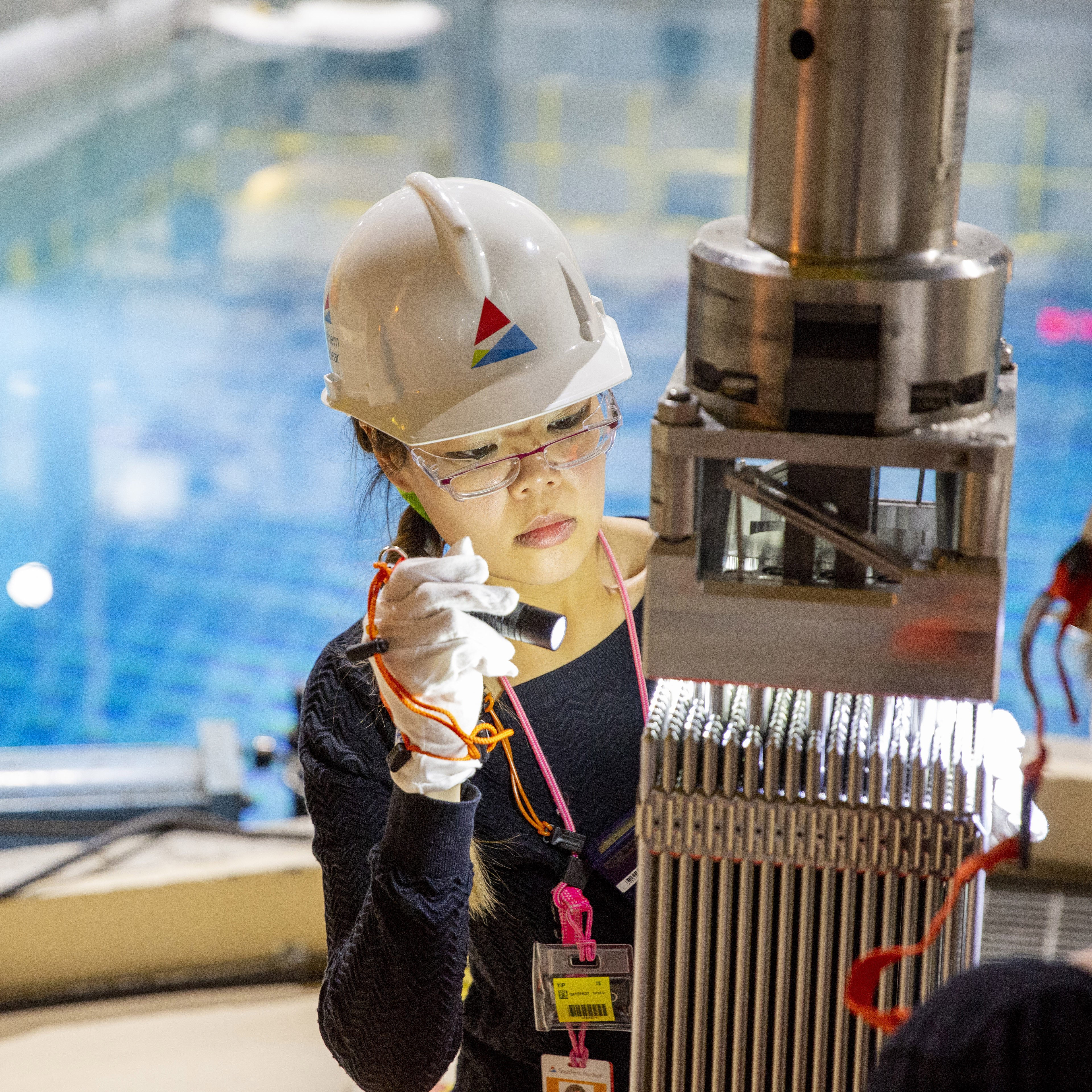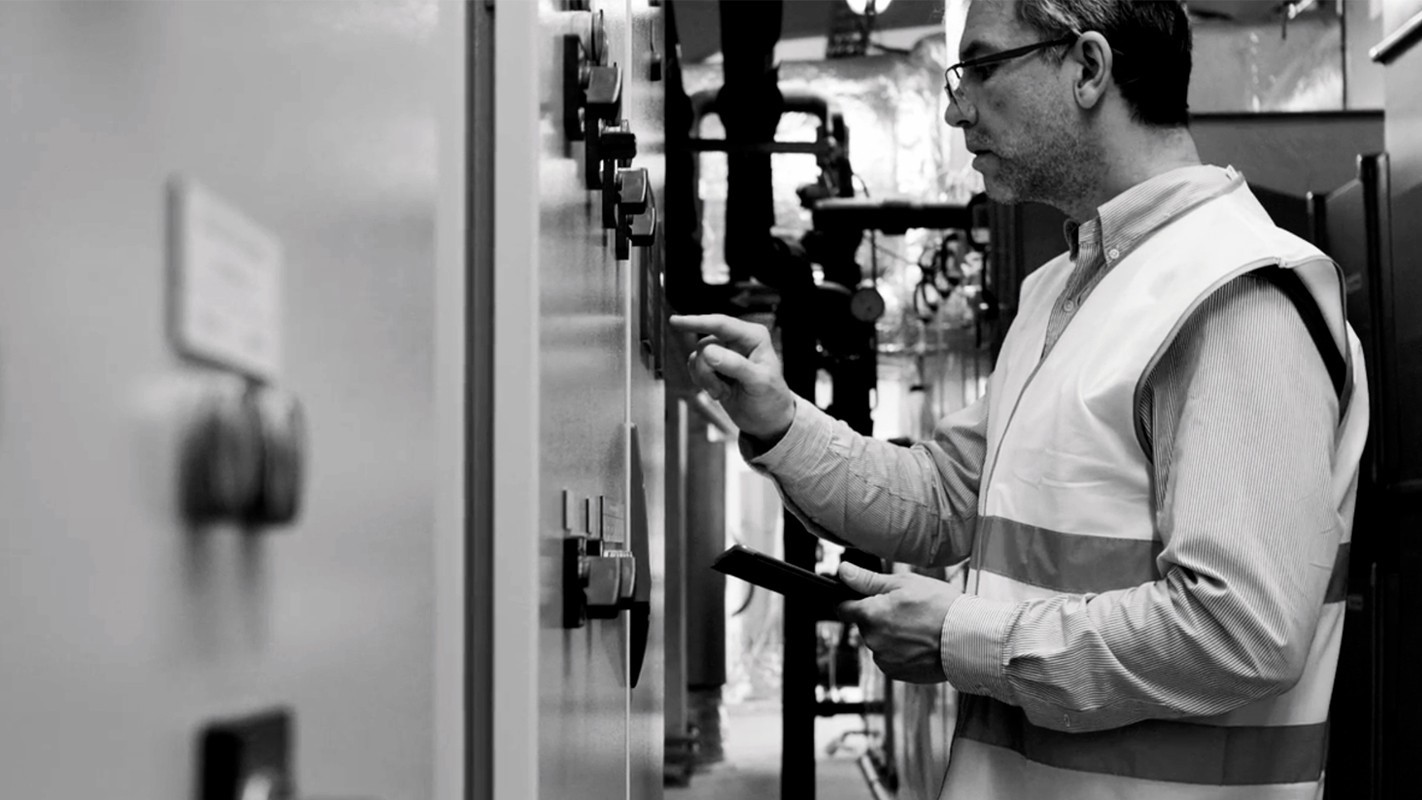Nuclear Energy Is the Future
 Nuclear energy comes from splitting atoms in a reactor to heat water into steam, which then turns a turbine to generate electricity. Ninety-four nuclear reactors in 28 states generate nearly 20 percent of the nation’s electricity, all without carbon emissions because reactors use uranium, not fossil fuels. These plants are always on: well-operated to avoid interruptions and built to withstand extreme weather, supporting the grid 24/7.
Nuclear energy comes from splitting atoms in a reactor to heat water into steam, which then turns a turbine to generate electricity. Ninety-four nuclear reactors in 28 states generate nearly 20 percent of the nation’s electricity, all without carbon emissions because reactors use uranium, not fossil fuels. These plants are always on: well-operated to avoid interruptions and built to withstand extreme weather, supporting the grid 24/7.
Nuclear power plants  are the largest source of carbon-free electricity in the United States, supplying reliable and affordable power around the clock while also protecting public safety and the environment. These attributes make nuclear power essential to the nation’s urgent efforts to decarbonize the electric grid in response to climate change.
are the largest source of carbon-free electricity in the United States, supplying reliable and affordable power around the clock while also protecting public safety and the environment. These attributes make nuclear power essential to the nation’s urgent efforts to decarbonize the electric grid in response to climate change.
"Nuclear is important cause it means power, and power is how we’re able to connect not only locally but internationally"
- Nikki Sizemore
Benefits to Nuclear Energy

Nuclear energy provides large amounts of 24/7 carbon-free electricity now, which is irreplaceable in protecting the environment.

Nuclear energy provides more than 100,000 well-paid, long-term jobs and supports local economies with millions of dollars in state and local tax revenues.

The United States pioneered nuclear energy for the world and, with continued leadership, can respond to growing clean energy demand worldwide with advanced reactors.

Check Out These Resources!
Learn more about Nuclear Energy using the resources below
Frequently Asked Questions
Here, you'll find answers to the most common questions about nuclear energy, from how it works and its environmental impact to its role in the future of sustainability.
Nuclear power plants maintain the highest standard for operational safety, security, cybersecurity, and emergency preparedness. The industry’s comprehensive safety procedures and stringent federal regulations keep our plants and neighboring communities safe.
The industry’s numerous stakeholders include communities located near nuclear power plants and fuel cycle facilities. Those communities include minority, indigenous, low-income, and other disadvantaged populations. Nuclear power avoids adverse climate change impacts that have been shown to disproportionately affect disadvantaged communities. Nuclear power plants also provide jobs, local economic benefits, and community support.
In most power plants, you need to spin a turbine to generate electricity. Coal, natural gas, oil, and nuclear energy use their fuel to turn water into steam and use that steam to turn the turbine.
Nuclear plants are different because they do not burn anything to create steam. Instead, they split uranium atoms in a process called fission. As a result, unlike other energy sources, nuclear power plants do not release carbon or pollutants like nitrogen and sulfur oxides into the air.
Once removed from a reactor, used fuel assemblies initially cool down in a storage pool. The concrete and steel pool and the water shield workers from radioactivity.
When cool enough that it no longer needs to be stored underwater—typically for 2 to 5 years after removal from the reactor—used fuel is transferred and stored in large steel-reinforced concrete containers that are designed for long term storage until a site is available for permanent disposal. They’re safe enough to walk up to and touch.
Uranium is an abundant metal and is full of energy: One uranium fuel pellet creates as much energy as one ton of coal, 149 gallons of oil or 17,000 cubic feet of natural gas. It does not come out of the ground ready to go into a reactor, though. It is mined and processed to create nuclear fuel.
A nuclear reactor is like an enormous, high-tech tea kettle. The nuclear reactors currently operating in the United States are either boiling water reactors or pressurized water reactors. The names can be a bit misleading: Both use steam to power a generator, but the difference is how they create it.
Where are you in your journey?
Explore these pages to find more resources.
Find nuclear near you!
If you're interested in exploring the various education programs associated with nuclear or if you're ready to start looking at jobs in your area, click on one of the maps below!
Get In Touch
Nuclear Works Group






